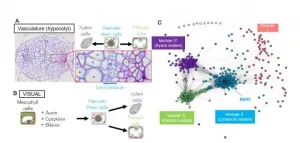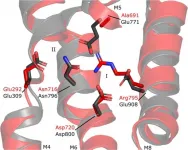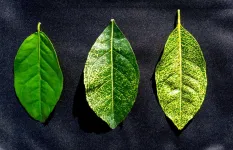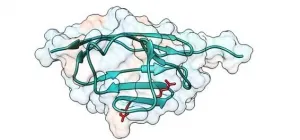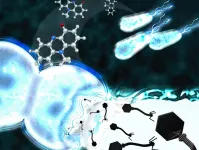Clearer and refocused SEM images
2021-06-10
(Press-News.org) With the onset of the 4th industrial revolution, artificial intelligence has recently been utilized in smartphone cameras, providing functions such as auto-focusing, face recognition, and 100x zoom, to dramatically improve our daily life. It has also been applied to research and development of new materials.
A joint research team from POSTECH and Korea Institute of Materials Science (KIMS) has applied deep learning to the scanning electron microscopy (SEM) system to develop a technique that can detect and improve the quality of SEM images without human oversight. The EMS is an essential material analysis equipment used for developing new materials. The findings from this research were recently published in Acta Materialia, the most authoritative journal in the field of metal materials.
The SEM is one of the most advanced material analysis equipment crucial to investigating the correlation between the microstructural and physical, chemical, and mechanical properties of materials by providing their microstructural image data. However, in order to obtain high-quality, clear SEM images, the operator must be highly-skilled to maneuver the system with high precision - otherwise, it can lead to low-quality microscopy images. The quality of these images needs to be improved because they directly affect the subsequent material analysis processes.
To this, the joint research team developed a deep learning-based refocusing method that automatically detects and improves the quality of the microscopy images. This technology is based on multi-scale deep neural network and it demonstrated that the image quality can be improved on blind settings without any prior knowledge or assumptions of the degree of blurring on the level of image degradation. In addition, the researchers also proposed a technique to train the network to learn not only how but also where to refocus in non-uniformly defocused images, moving a step closer to commercializing AI-based material analysis equipment.
"We expect the cost and time for developing new materials to be reduced by automating the SEM imaging process of the scanning electron microscopy, which is widely used for research and development of new materials," remarked Professor Seungchul Lee who led the study.
INFORMATION:
This research was conducted with the support from the Mid-career Researcher Program and the Priority Research Centers Program of the National Research Foundation of Korea, the AI Graduate School Program of the Institute for Information & Communication Technology Promotion (IITP), and the Korea Institute of Materials Science.
[Attachments] See images for this press release:
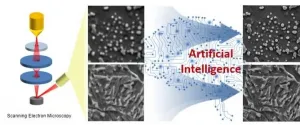
ELSE PRESS RELEASES FROM THIS DATE:
2021-06-10
An inter-university research group has succeeded in constructing the gene expression network behind the vascular development process in plants. They achieved this by performing bioinformatics analysis using the 'VISUAL' (*1) tissue culture platform, which generates vascular stem cells (*2) from leaf cells. In this network, they also discovered a new BES/BZR transcription factor (*3), BEH3, which regulates vascular stem cells. In addition, they illuminated a novel vascular cell maintenance system whereby BEH3 competes with other transcription factors from the same BES/BZR family in order to stabilize vascular stem ...
2021-06-10
Cell viability require that a variety of functions at the cell membrane are maintained properly. P-type ATPases translocate substrates across the membrane, and they have evolved into different types taking care of specific substrates within a diverse range. Now, key structural aspects have been described on how two different types of P-type ATPases - a Ca2+ transporting Ca2+ -ATPase and a lipid transporting P4-ATPase - have adapted to different substrates and physical environments.
Many bacteria export intracellular calcium using active transporters homologous to the well-described ...
2021-06-10
Researchers from Tel Aviv University took part in a new international study proposing an amendment to the widely accepted theory on the extinction of animal species - by moving the focus from the animal's body size to its reproductive capacity. The researchers found gaps and incompatibilities between mammals and amphibians in the relation between body size and extinction risk: Whereas large mammals bear a smaller number of offspring per birth, leading to higher risk of extinction, larger amphibian females lay more eggs, reducing the threat to the species.
The researchers analyzed data from databases on both extinction risks and reproductive capacities of various species of amphibians (e.g., frogs and salamanders). Contributors to the ...
2021-06-10
How much do the effects of climate change contribute to extreme weather events? It's hard to say--the variables involved are plentiful, each event is unique, and we can only do so much to investigate what didn't happen. But a new paper from Lawrence Berkeley National Laboratory (Berkeley Lab) climate scientist Michael Wehner investigates the question for one particular element of one significant storm and makes the results available to those who lived through it.
In the paper, "Attributable human-induced changes in the magnitude of flooding in the Houston, Texas region during Hurricane Harvey," published May 19 in Climatic Change, Wehner and Christopher Sampson from Fathom Bristol used a hydraulic ...
2021-06-10
Even on a good day, DNA is constantly getting damaged.
Nicks, scratches, breaks: the delicate strands that carry life's genetic code take a beating as they jumble about in the course of their work. If left untreated, errors accumulate, with fatal consequences -- such as cancerous tumors -- for the cell and the organism.
This is where two key proteins come to the rescue: PARP -- or poly ADP ribose polymerase -- acts as a marker for a trouble spot, allowing XRCC1 -- or X-ray repair cross-complementing protein 1 -- to zoom in and begin a repair.
This much has been known for some time and was even recognized in the 2015 Nobel prizes ...
2021-06-10
A team of archaeologists from the Hebrew University of Jerusalem (HU) made a rare discovery when they unearthed a small clay seal impression dating back some 7000 years. The impression, with two different geometric stamps imprinted on it, was discovered in Tel Tsaf, a prehistoric village located in Israel's Beit She'an Valley up north.
The discovery was made as part of a dig that took place between 2004 and 2007 and was led by HU's Professor Yosef Garfinkel along with two of his students, Professor David Ben Shlomo and Dr. Michael Freikman, both of whom are now researchers at Ariel University. One hundred and fifty clay sealings were originally found at the site, with one being particularly rare and of distinct, historic importance. The object ...
2021-06-10
LA JOLLA--(June 10, 2021) In order for cancer to grow and spread, it has to evade detection by our immune cells, particularly specialized "killer" T cells. Salk researchers led by Professor Susan Kaech have found that the environment inside tumors (the tumor microenvironment) contains an abundance of oxidized fat molecules, which, when ingested by the killer T cells, suppresses their ability to kill cancer cells. In a vicious cycle, those T cells, in need of energy, increase the level of a cellular fat transporter, CD36, that unfortunately saturates them with even more oxidized fat and further curtails their anti-tumor functions.
The discovery, published online in Immunity on June 7, 2021, suggests new pathways for safeguarding the immune system's ...
2021-06-10
Scientists are hoping the RNA of an obscure infection can one day be used like a Trojan horse to deliver life-saving treatments to citrus trees.
The infection, citrus yellow vein disease, was discovered 64 years ago in Riverside and has never been seen elsewhere in the world. Decades later, UC Riverside researchers have finally unraveled the associated pathogen's genetic codes -- a significant step toward harnessing its unique properties.
A paper describing this work was published recently in the journal Frontiers in Microbiology. It opens the door to testing whether this apparently ...
2021-06-10
Scientists at the Centro Nacional de Investigaciones Cardiovasculares (CNIC) have described a potential disease-causing mechanism in hypertrophic cardiomyopathy (HCM), the most frequent hereditary disease of the heart. The study, published in the journal ACS Nano, provides the first description of an association between this disease and mechanical alterations to a component of the contractile machinery of the heart.
The heart muscle is under constant mechanical stress throughout life as it contracts to pump blood to the body. The laboratory led by Dr. Jorge Alegre-Cebollada investigates how the mechanical properties of the cardiac proteins determine the physiological behavior of this muscle and how alterations to these properties lead to the appearance of diseases like ...
2021-06-10
This targeted control of phages provides entirely new biotechnological and therapeutic approaches, e.g. for phage therapies. The results produced in the context of an ERC grant have been published in the Journal of the American Chemical Society.
The human body and its microbiota harbour a large amount of phages. These infect bacteria as virus particles to ensure their own survival. One of their strategies is to integrate into the bacterial genome and multiply via bacterial cell division. However, external signal molecules can trigger the phages' sudden awakening from their dormant ...
LAST 30 PRESS RELEASES:
[Press-News.org] Clearer and refocused SEM images

